
Renault Megane RS Review

Introduction
For those unfamiliar with the initialisation, ‘RS' stands for… ‘hot-hatch’. Clearly.
Actually, it doesn’t. It really means ‘Renault Sport’. But the point is that a Renault with ‘RS’ in its name should instantly make you think of a body-kitted out version of the standard car it’s based on, with a lot more grunt and handling to suit a racetrack, as well as the public road.
Select's rating score* - 3.7 / 5
At a Glance
The Megane RS is the French manufacturer’s answer to the Volkswagen Golf GTI (and, nowadays, the plethora of other fast Golfs in the range) but, up until now, it’s always been in the German’s shadow.
Whether this new version finally enables it to take a step into the limelight remains to be seen, but first impressions are memorable.
Indeed, the RS certainly looks the part. Every bit of the front end is exaggerated compared with the standard car. It is lower and slightly wider, too.
Just like its non-steroidal sibling, it has a large Renault badge on the front in the middle of the main grille. But, unlike the standard Megane, there’s an additional smaller grille just below it, above the number plate, while ‘e’-shaped headlights add more personality to the design.
The front is given more sports styling, with a curved silver spoiler working its way from one side to the other, giving definition to the area in which the fog lights are housed.
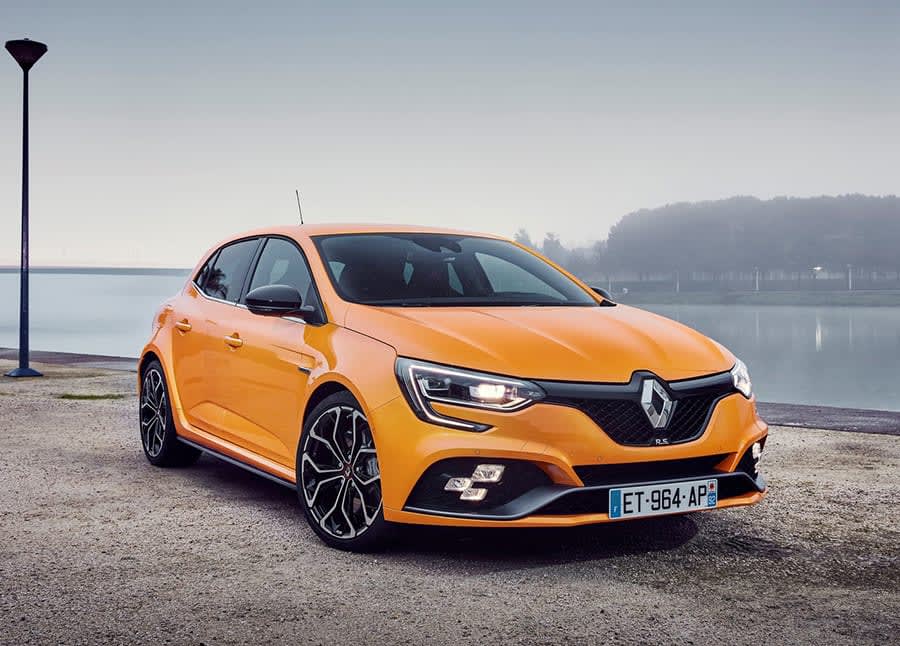
In doing so, this means the front is divided up into a total of five smaller ‘grille areas’ (although the two for the fog lights are fake), and this makes it look rather too busy.
Some will like it, but we think it looks a tad odd. But then ugliness can sell in this weird and wonderful world.
Down the side, bigger skirts add a more athletic stance, while creases and indentations in the lower part of the doors add to the sportiness.
The rear looks the part, though. Even though there's still a lot going on, it doesn't seem as chaotic as the front end, with neatly angled rear lights that taper in and extend into the middle of the boot.
A large central exhaust pipe sits down below, with a 'six-hole' diffuser which adds context to the car's sporting credentials. It looks very impressive. We just wish Renault had applied a similar design philosophy to the front, where, if anything, it seems like the automaker has tried a bit too hard.
Key Features
There are two versions of the Megane RS available.
Both are front-wheel drive, featuring a four-cylinder 1.8-litre turbocharged petrol engine producing 300PS, which is connected to a six-speed dual-clutch automatic gearbox.
The RS 300 has a sports chassis, 18-inch wheels, grey brake callipers, a dual-sound exhaust valve system, gear-shift paddles, and a gear-shift indicator. It also boasts an electronic parking brake, four-wheel steering, cruise control, electric and foldable door mirrors, a keycard, automatic dual-zone climate control, electric front windows and tinted rear windows. A rear spoiler, automatic headlights and wipers, LED headlights, parking sensors, a rear-view camera, and a 9.3-inch touchscreen infotainment system are also included.
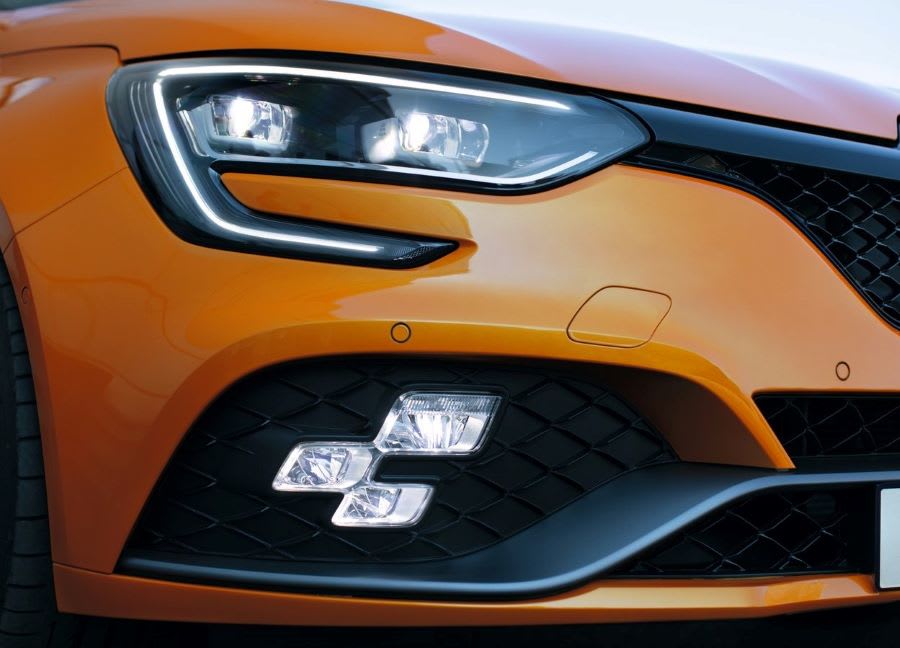
Alternatively, you can opt for the RS Trophy version. This incorporates all the above but adds the ‘cup’ chassis (which basically means it’s more competition-tuned for a track) and includes a limited-slip differential. In addition, the alloys are upgraded to 19-inches. At the same time, it also includes red brake callipers, bi-material brakes, Alcantara full-grain leather steering wheel, Alcantara upholstery with red stitching and heated front seats.
If you’re disappointed there’s no manual, you’re not missing much. The previous RS had one, but it wasn’t very good. Besides, if you’re in a sports car nowadays, you’ll probably expect a paddle-shift gearbox, which is duly provided.
Performance & Drive
Putting your foot down will instantly light your hair on fire (if you have any!). It sounds epic – especially when you select either Sport or Race mode – and packs a real punch off the line from a standing start, getting from 0-62mph in 5.7-seconds and topping out at 158mph. The acceleration feels a little restrained at higher speeds, though.
The non-existence of a limited-slip differential in the RS 300 means you'll get more wheelspin if you floor it compared with the RS Trophy, but this is something you'll get used to. Those who demand a car that grips the road, even when the throttle is floored, will want the higher-spec version, though.
But while going in a straight line is all well and good, there is a price to pay. The ride is very firm, and you'll be thankful for the comfortable seats. But even they aren't enough to stop you from feeling lumps and bumps in the road, while even smaller potholes feel bigger than they are. With several choices on offer for the seats and different options between the RS 300 and RS Trophy versions, it’s worth investing time in your research and choosing carefully.
The suspension is unforgiving and can make the car a bit skittish. What’s more, the steering is super-sensitive, which might be advantageous on a track, but to live with on the road every day only serves to make the car a little twitchy. The four-wheel steering is supposed to help with cornering and provide extra stability, but, in truth, we have to disagree.
It might help you take more speed around a corner on a track, but, in the real world, we found the car never felt settled on the road, which only detracts from your confidence in finding the Renault’s limits around bends.
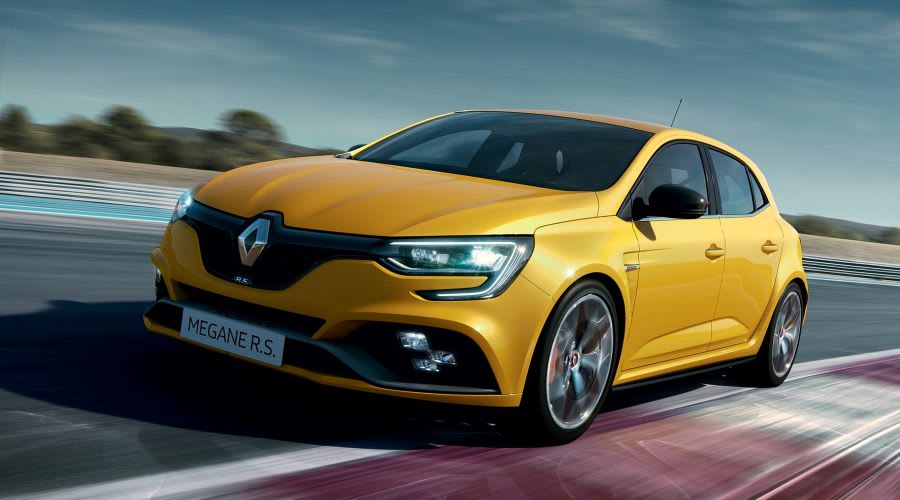
The lack of a limited-slip differential in the RS 300 will frustrate those who like to stamp on the power early out of a bend. Doing so will compromise your exit if you bury the throttle too soon, as you’ll find demand will outstrip supply in terms of grip.
Road noise is more noticeable than on a standard Megane, no doubt thanks to the bigger, wider tyres.
The automatic gearbox is generally smooth and responsive when on the move, although it can get vaguely shuddery at very low speeds.
Given that we’ve test-driven the RS 300, we can’t imagine the RS Trophy version is going to be any more comfortable with bigger wheels. The limited-slip diff might help with the jitteriness, corner exits and outright performance from a standing start, but it won’t be easier to live with day-to-day, bearing in mind that’s the track-focused version.
Despite its shortcomings, it is still a lot of fun to drive and, once you’ve developed some natural finesse in coping with the ultra-sensitivities of the car, it’ll put a big smile on your face.
All in all, the RS is not a car that’s designed to be driven for long periods – it was pretty tiring after our 100-mile test drive. But then hot-hatches rarely make long-distance cruisers. We're not sure we could live with it every day, especially if you have a lengthy commute to work.
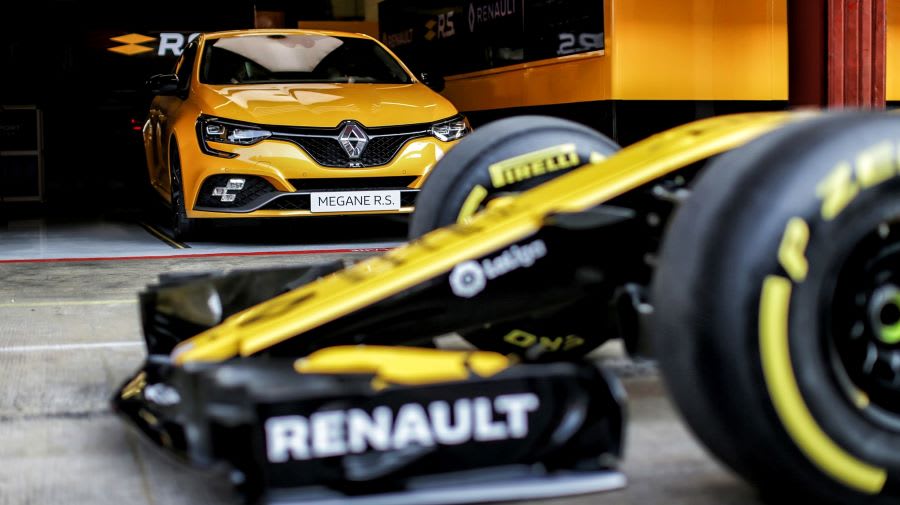
Running Costs & Emissions
Both versions will manage between 28.3 and 29mpg, outputting between 183 and 189g/CO2 per km.
Bear in mind, though, that this French car is built to be driven – and driven well. So if you do that, don't expect to be getting anywhere near 30mpg, as the official figures claim.
Impressively - and just for your info - it comes with a five-year, 100,000-mile warranty – and it’s offered with unlimited mileage for the first two years.
It’s just as well, though. Renault has not performed well in reliability or customer satisfaction surveys in recent years, which is worth bearing in mind before you part with your cash.
For more information on fuel types and which best suits your lifestyle, consult out Fuel Guide.
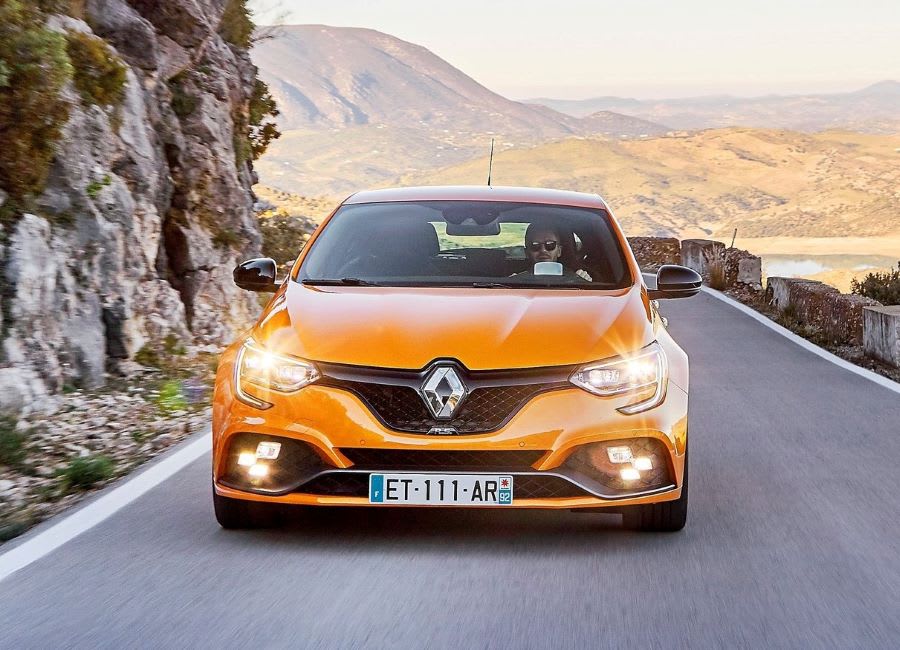
Interior & Technology
Sadly, inside is where it all unravels a bit.
With all the work done on the exterior to make the RS look as sporty as possible, the interior will likely leave you feeling underwhelmed.
Yes, there are sports seats. Yes, there's red detailing on the dashboard and the steering wheel. And yes, there are bits of trim that add to the sportiness. But, overall, it looks like the interior of any other Megane.
There is nothing wrong with it as such. We just expected more of a sense of occasion when we stepped inside.
The aluminium pedals are a nice touch, and there are plenty of soft-touch surfaces. But other than the odd bit of silver here and there, it looks monotonal, a tad plasticky and built to a budget. Although, to say it seems outright cheap would be unfair. You also get a carbon fibre pattern on the armrests of the door, except it is rubber and just screams fakery.
Speaking of which, a synthetic ‘engine rev’ plays on the speakers when you unlock or open the doors, which is unnecessary, gimmicky and annoying.
On the plus side, the Renault's seats are comfy and offer a lot of body support.
The large 9.3-inch touchscreen is positioned in portrait and integrated into the dashboard. We’ve seen worse, but it’s not a patch on the premium brands’ offerings and isn’t anything worth writing home about. We suspect most people will just use the Apple CarPlay/Android Auto connectivity, that comes with the car.
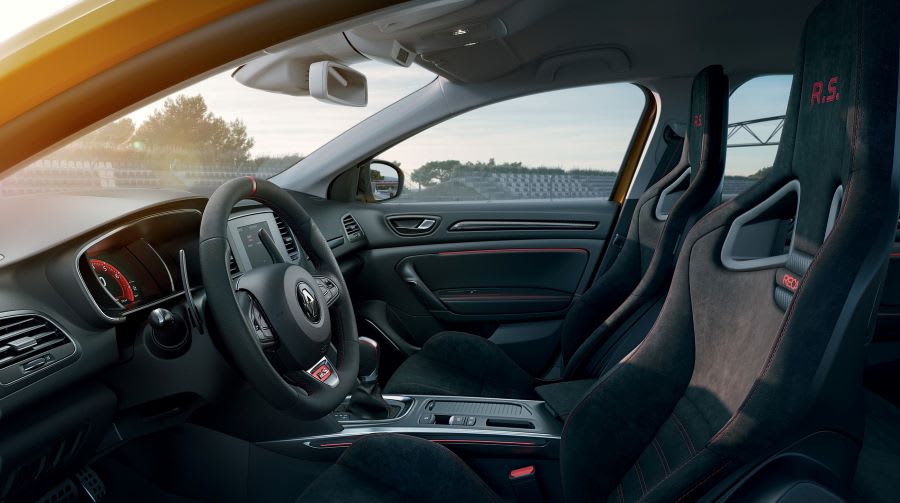
Practicality & Boot Space
Front visibility is okay, although the view out of the rear is somewhat restricted due to the large pillars.
You’ll get 384-litres of load space (expanding to 1,247-litres with the rear seats folded down). This compares similarly with the Volkswagen Golf GTi and the Mercedes-AMG A45. You’ll get 420-litres in the Honda Civic Type R (although this only expands to 786-litres with the rear seats down).
The load-lip is rather tall, which makes lifting large, heavier objects into the boot rather tricky. But then you're unlikely to be leasing an RS to load bags of bricks into the back.
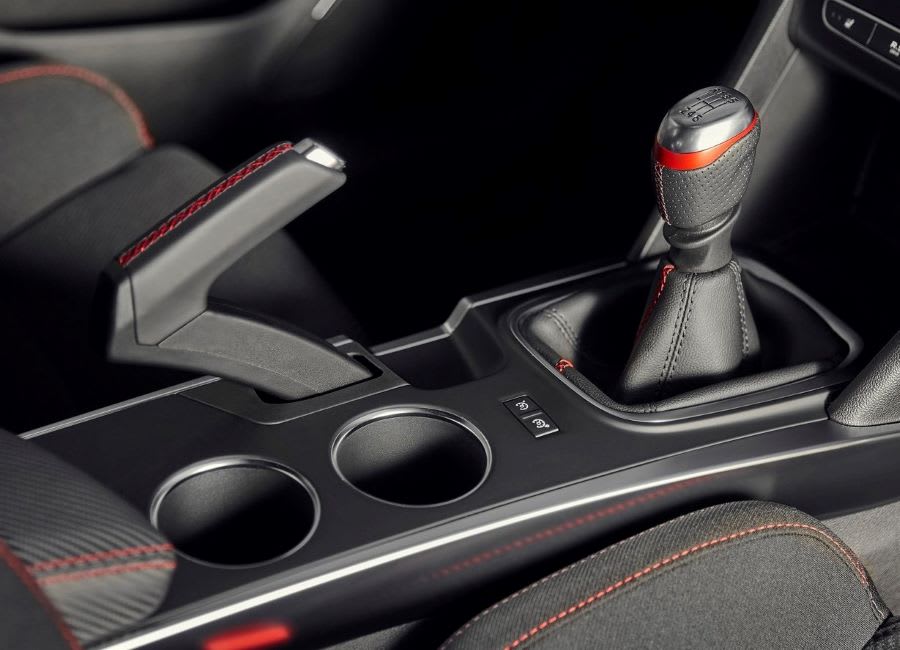
Four adults will fit in the car - five is a doable tight squeeze, though - and there’s enough room for three kids to sit comfortably in the back.
You will find plenty of storage inside the car, including decent-sized door bins and some extra space in the front armrest. There are also USB sockets behind the gear lever, while two cupholders are provided in the front.
Safety
Euro NCAP hasn't specifically tested an RS version of the Renault Megane, but there's no reason it should be any different to the standard car. That was last tested back in 2015, where it earned a five-star safety rating, scoring 71 per cent for safety assists.
It is worth noting that, as cars get safer and safer, more and more score five stars, so Euro NCAP changes the criteria now and then to compensate. But, unfortunately, the goalposts were last moved in 2020, so the same Megane tested today may not do as well.
Nevertheless, the RS comes with lane departure warning technology; hill start assist, ABS and brake assist, safe distance warning alert and traffic sign recognition, which should offer peace of mind.
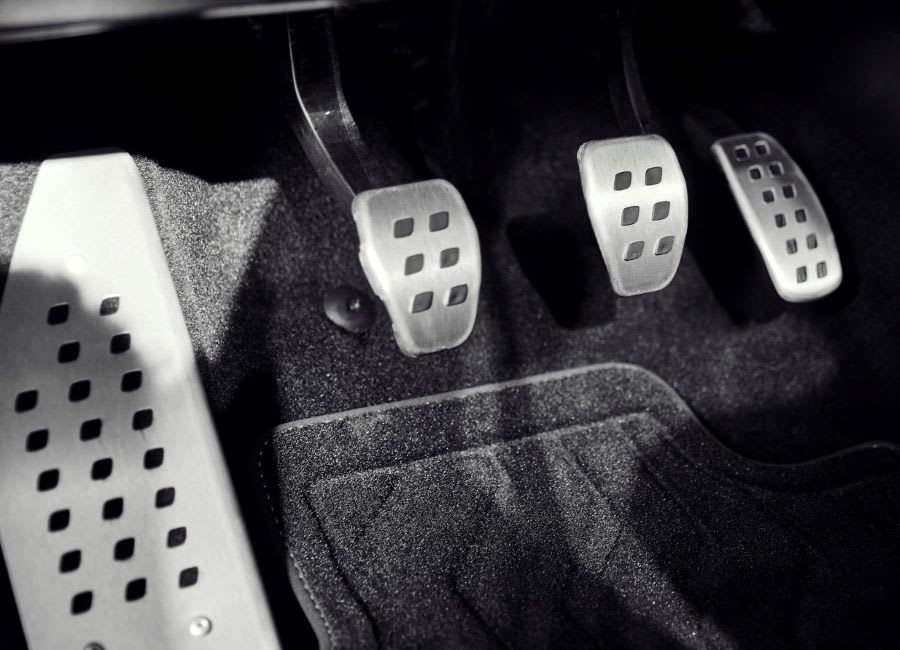
Options
Solid white paint is included as standard. For an extra amount, there's a choice of light grey, dark grey or black. A bit more digging in your pockets gets you a selection of red or 'arctic' white. Or, for a substantial amount more, you can have 'volcanic orange' or Renault's racing colour of yellow.
As far as the primary options list is concerned, an Alcantara full-leather steering wheel is yours for a bit extra. In addition, you can choose heated front seats for a reasonable amount more, while Alcantara upholstery with red stitching is a hefty additional four figures. These are standard on the RS Trophy, though.
If you want to fold all three rear seats individually, you can choose this option at no extra charge.
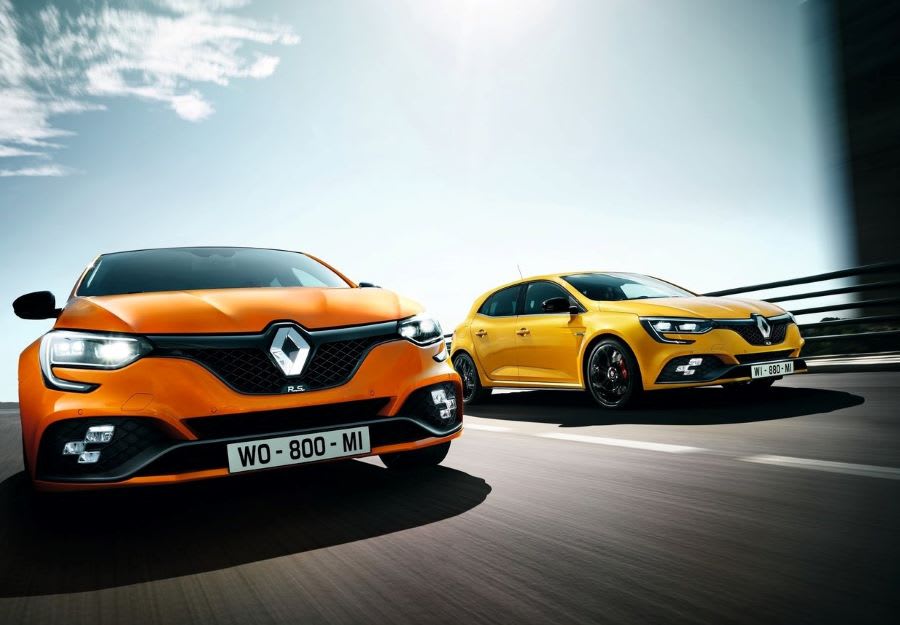
A panoramic sunroof costs extra, and, if you want to offset some of the additional weight this adds, you can pay for optional Fuji lightweight alloys, but only on the RS Trophy version.
Again, exclusive to the RS Trophy, Recaro seats cost quite a lot more, while, if you're into track days, an RS Monitor will set you back just a few hundred pounds. This provides you with bits of telemetry relating to steering, throttle and braking, plus a g-force metre. It also links to an app on your smartphone, which you can film your lap from and then it provides a nice overlay of data onto the videos you create.
Rival Cars
There is no shortage of alternatives in the hot-hatch market.
You will want to have a look at the Hyundai i30N. Admittedly, it's not the pick of the bunch, but when leasing an expensive car, you'll want to make sure it’s taken care of. With Hyundai also coming with a better reliability record, this might tempt you.
Ford has the Focus ST, too (although this is a watered-down version of its now-discontinued all-out hot-hatch, the RS).
Volkswagen’s Golf GTi is the obvious go-to car when you think of hot-hatches. While it's still an excellent car, it’s got much stiffer competition nowadays, and it’s no longer miles ahead like it used to be. There is also a range of other sporty Golf models you might want to consider if you’re willing to broaden your horizons, such as the GTi Clubsport, GTE, GTD– plus the Golf R, which is four-wheel drive.
The latest Honda Civic Type-R excels, though. It is arguably the class leader at the moment, especially if track days are your thing.
If you want to shy away from the obvious choices, Seat’s Leon Cupra R is also worth shortlisting.
Want more space? A Skoda Octavia vRS might be a good option if you don’t mind a saloon or an estate.
And let’s not forget the likely unfancied underdog – the Toyota GR Yaris– which is surprisingly excellent.
If you’re happy to look towards the premium brands, the Mercedes-AMG A45 might be one to grab your attention.

Verdict & Next Steps
The Megane RS is a decent car but is only likely to appeal to those who want to extract every last drop from a driving experience.
It has got striking looks, it’s well equipped, handles reasonably well (despite the ultra-sensitivity) and has engine power to match – plus it is lots of fun to drive.
But it gets uncomfortable before too long, and the half-hearted attempt to spruce up the interior is frustrating. The infotainment system is only average, too.
We don’t think the RS will suit most drivers for everyday use. But, for performance-seekers, you’re probably better off with the RS Trophy version. The limited-slip differential will be worth the extra investment for the improvements in handling, plus the Alcantara adds a nice touch in the otherwise samey interior.
At the same time, the upgraded seats may offset the additional discomfort from the bigger wheels. Finally, the RS Monitor will be loved by those who want to relive their laps like a PlayStation game.
Overall, the Megane RS isn’t as obvious a choice as some of the alternatives, so its relative exclusivity might be appealing.
But the truth is that exclusivity applies even more so to other rivals, while the go-to hot-hatchbacks - especially Volkswagen and Honda- are still leading the way.
Where to next?
View latest Renault Megane RS leasing deals - from just £339.97 per month inc VAT**
Looking for a great deal? Check out our incredible range of car lease deals
New Hatchback? Read our latest Car Reviews and find the right model for you
Want to know more about leasing? Take a look at our comprehensive Leasing Guides
Interested in everything motoring? Why not catch up on all the latest Car Leasing News.
**Score based on Select’s unique meta score analysis, taking into account the UK’s top five leading independent car website reviews of the Renault Megane RS
**Correct as of 23/11/2021. Based on 9 months initial payment, 5,000 miles over a 48 month lease. Initial payment equivalent to 9 monthly payments or £3,059.73 Ts and Cs apply. Credit is subject to status.
.jpg)


















